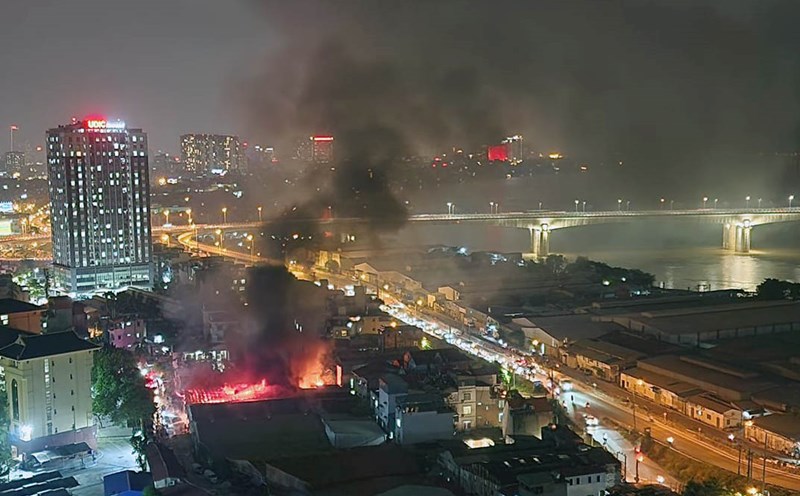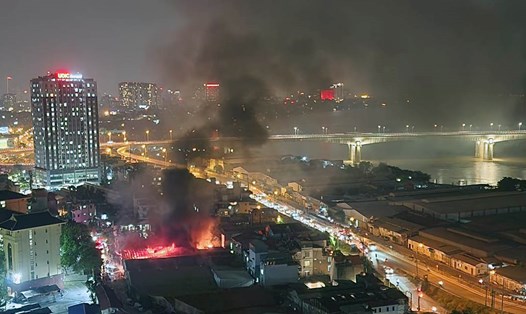According to the Traffic Infrastructure Maintenance Board (Hanoi Department of Transport), after inspection, cracks appeared in the structure of Vinh Tuy bridge's girders; the steel bridge bearings on the main spans of the bridge crossing the river were rusty and had not been greased or painted; the bridge abutments and top walls had diagonal and vertical cracks.
The current state of the concrete structure of the main river-crossing pillars T19, T21, T22, T23, T24 has vertical cracks...
From the inspection results, the Traffic Infrastructure Maintenance Board proposed to repair and treat concrete cracks to ensure the requirements on allowable limits; repair and replace rubber expansion joints, and extend drainage pipes on Super T girder spans in the middle of the river to facilitate future maintenance.
For the pot bearings, the Board recommends two options. Option 1, for the rusted steel pot bearings that have not been greased, it is necessary to remove the rust and repaint with a high-durability, multi-layer paint system or remove the rust, repaint with anti-rust paint and then apply protective grease.
Option 2: For greased bearings, it is necessary to check the protective grease layer to avoid the grease layer sticking to the sliding plate, affecting the performance of the sliding plate. For bridge surfaces, it is recommended to scrape and re-carpet the spans that show signs of rutting and unevenness.
It is known that Vinh Tuy bridge is a vital bridge across the Red River, connecting the center of the capital with Long Bien district, Gia Lam district and National Highway 5.
After many years of construction, this bridge often fell into a state of overload and congestion during rush hours. It was not until the Vinh Tuy Bridge Phase 2 was put into operation that the traffic tension was gradually reduced.










